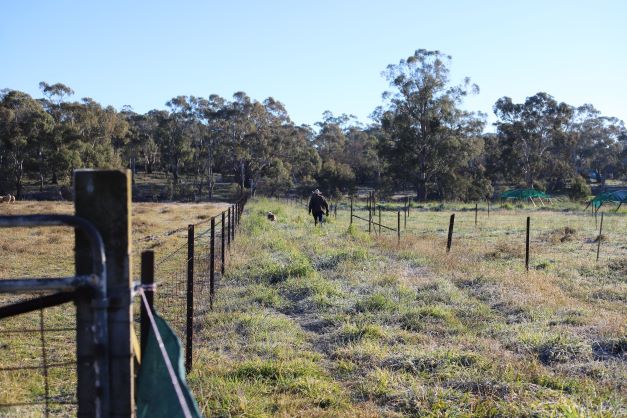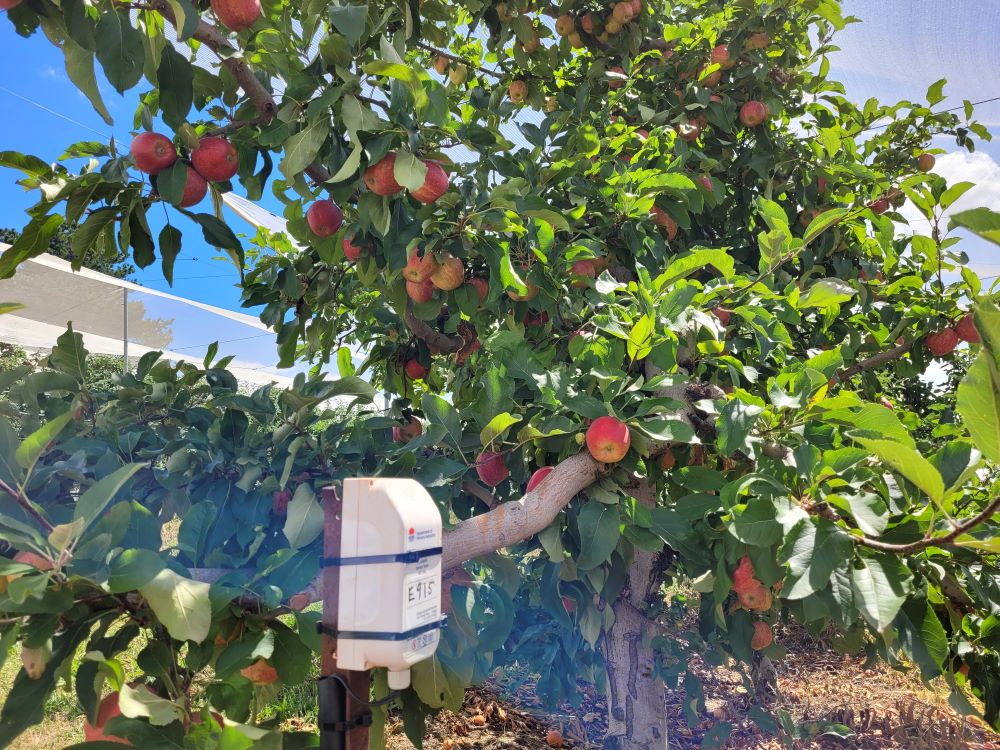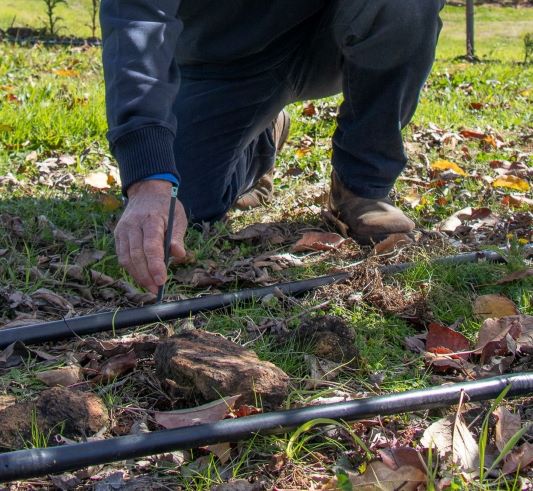Livestock Pilot
Project details
- Allen Benter -
Technical Specialist - p. 0418 716 688
- e. allen.benter@dpi.nsw.gov.au
From decisions about feed and water resources to those about the weather, each and every day livestock producers make on-the-go choices.
For Ben Watts, a Merino producer based in Molong district in central west NSW, these decisions may not seem big individually but collectively they add up.
Ben has been working with NSW DPI on the Livestock Pilot, part of the broader NSW DPI $6.7 million Climate Smart Pilots project. He finds that having accurate numbers on farm production via sensors is hugely beneficial.
"It’s been amazing how having data changes your thinking. You can take all of the emotion out of decision making and deal with real, live figures. Looking forward, I would put sensors on my next site. I wouldn’t run a farm without them."
With a gross value of $6.65 billion in 2018-19, the NSW livestock industry contributes almost a quarter to the value of Australia’s livestock production. However, like other agricultural enterprises, it faces climate change challenges. Trialling technology that monitors resources is one way of preparing for coming changes, while benefiting on-farm economics now.
The multi-site Livestock Pilot is running at Molong, Orange, Eurimbla, Tullamore, Binginbar, and Trangie. The project draws together DPI staff and livestock producers to test technologies that monitor resources and climate. The aim is to manage water availability across the farm, monitor stock stress loads from heat and cold, while building models to help in forecasting future resource decisions.
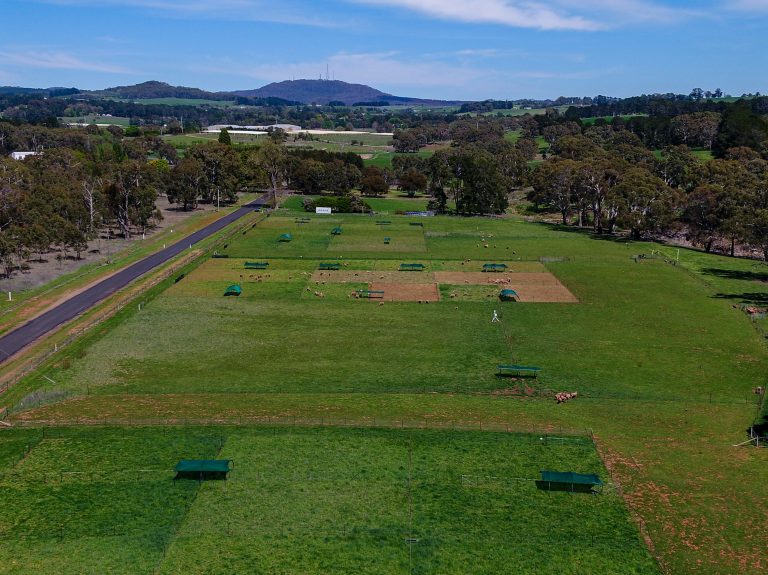
Livestock research scientist Dr Gordon Refshauge, who is advising the NSW Livestock Pilot, explains that greater climate variability and more frequent extreme events make pasture management difficult to optimise.
"And this has flow on effects for managing the quality of meat and wool."
Dr Refshauge says a changing climate also reduces livestock reproductive success. Increased daily minimum and maximum temperatures decreases animal fertility. Lambing rates drop when temperatures exceed 32°C during mating. Additionally, lamb survival is reduced during cold snaps.
"Lambs are most at risk to mortality if a cold snap occurs within 48 hours of hitting the ground."
The risks associated with cold snaps may be better managed if wind chill– an index of temperature, rainfall and wind — is better understood.
“We know temperature will increase due to climate change, but it is the timing of rainfall and wind that will drive most of the wind chill index and what we need to measure.”
This is where technology may help. Installing automatic weather stations (AWS) would provide local temperature, wind and rainfall data. This data can build an awareness of what combination of weather variables creates wind chill events and eventually help recognise risk factors.
“The key would be understanding the wind chill effects on-farm and making more informed decisions about the timing of lambing and shearing and using data to make more informed decisions,”
The Livestock Pilot is testing a number of technologies to improve animal welfare and production outcomes. Data from the wireless sensors being used is available to farmers through DPI’s FarmDecisionTECH platform.
These include:
Stock water monitoring sensors
- Sensors are being tested to monitor water infrastructure through line pressure, and trough and tank levels. Immediate benefits include animal welfare improvements, water and labour savings, and peace of mind. Longer-term benefits include identifying poor water quality.
Automatic weather stations (AWS) monitoring stock stress load
- AWS provide data that can help calculate heat load indexes by monitoring local temperature, humidity, wind and solar intensity. An understanding of these measures allows sheep and cattle producers to determine optimal strategies for managing their heat stress such as provision of shade or adjusting fibre content in rations.
- A wind chill index can also be quantified through local wind, temperature and rain measurements. This can help estimate ground saturation and whether puddles will form, which newborn lambs or calves may be impacted by.
- Local data can lead to improved animal welfare because patterns of risk can be built and management activities modified to suit conditions.
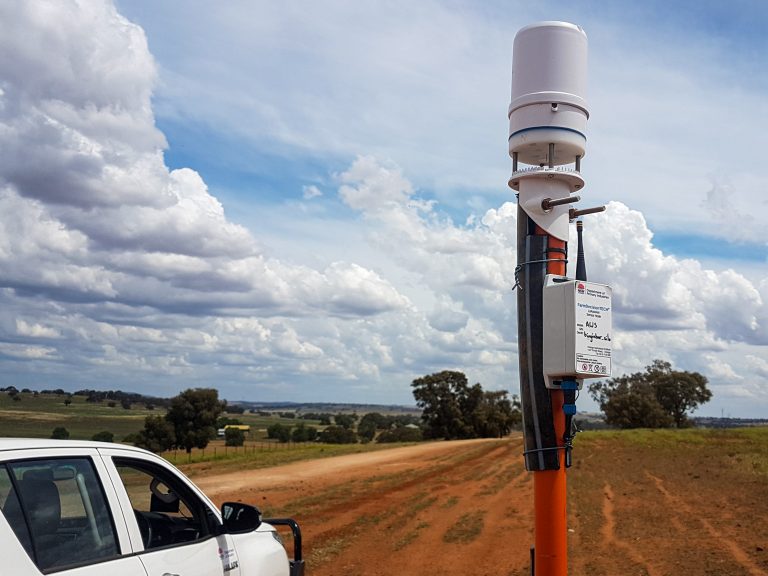
Soil probes for precision pasture budgeting
- Being able to monitor soil temperature and moisture will help inform pasture prediction modelling, providing an estimate of pasture feed on offer.
- Soil moisture and pasture growth are also early drought indicators. That data could inform stocking rate decisions when coming into drought, during drought and when recovering from drought.
Benefits
Climate Smart Pilots project leader Dr Allen Benter says these technologies can help producers to manage and mitigate climate challenges now and into the future and is part of the NSW Primary Industries Climate Change Research Strategy (PDF, 2352.34 KB).
Although the technologies are an important part of a much broader state response to climate change, for Molong-based Merino producer Ben Watts, it is their simplicity and on-farm application that is proving immediately valuable.
Not only does stock water monitoring reduce labour and fuel costs, it also importantly boosts peace of mind.
“This allows free headspace for other management decisions. Water is our most precious resource, a fact that drought belts home to all of us.”
After the hot summer of 2019/2020 Ben found the system a
“godsend. Even when I was away over Christmas being able to check in on weather and water meant the livestock never went without water.”
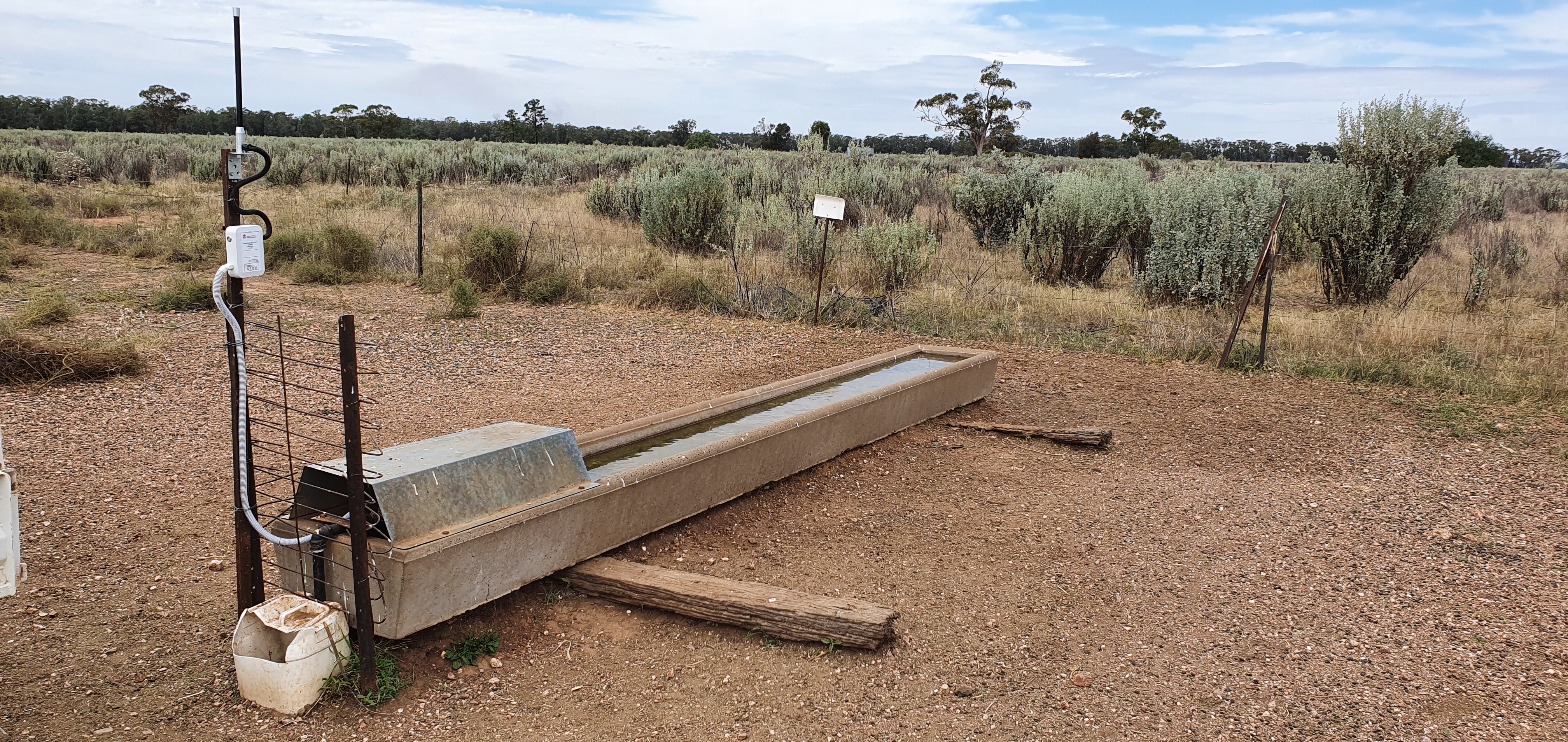
He has found tank sensors helpful but says trough sensors will be vital in the future because of the data provided. Trough sensors cannot only indicate if there is water available, but also other issues.
“If water in the trough has not changed it could indicate a leak or an electrical or solar pump issue, which we can then act on.”
Project partners are:
- Bralca Pty Ltd
- Binginbar Farms
- Centre Plus Merinos
- Meshed Pty Ltd
- Eurimbla Ag Sensor Technologies group
- DPI Grazing Research
- DPI Trangie Agricultural Research Centre
Project details
- Allen Benter -
Technical Specialist - p. 0418 716 688
- e. allen.benter@dpi.nsw.gov.au
Related Case Studies
